Canon recently released a long awaited Mark II version of their legendary 100-400mm lens, that was loved by many until the resolution of our cameras out-grew it. Today we’re going to take a look at this new lens, to see if it was worth the wait.
As the megapixels of the images that our cameras record increases, the demand on our lenses to resolve light down to a finer point of light increases too. Without sharp lenses, high resolution cameras can’t maximise the benefit of having more megapixels, and this is what happened with the original version of Canon’s 100-400mm lens.
A Little History
As digital came in and cameras went from 3 to 6, 8 then 12 megapixels, the telephoto end of the lens got gradually softer, and then as the 20+ megapixel cameras arrived, it really became unusable. If you are one of the people that has or still uses the old 100-400mm then this may seem harsh, but I personally found it so soft at 21 megapixels that I stopped using it, and sold my old copy after just not taking it out for a few years after buying a 1Ds Mark III and 5D Mark II.
For 8 years since then, my long lens needs were catered for by the 600mm and 300mm prime lenses with extender combinations, and they were great lenses, but I always missed the versatility of the zoom. I sold both the 600mm and 300mm to help pay for the 200-400mm 1.4X Extender lens in 2013, and that was a revolution in itself, giving me the ability to zoom from 200mm to 560mm with the flick of a switch, but it’s still a hefty lens, and requires a tripod and gimbal head for prolonged use.
I still missed having a reasonable range in a hand-holdable package, until of course, Canon released the Canon EF 100-400mm f/4.5-5.6L IS II USM at the end of 2014. My 200-400mm isn’t going anywhere, but with the release of the Canon EOS 7D Mark II also at the end of 2014, because of its crop factor, I can effectively zoom from 160mm to 640mm when using the new 100-400mm with the 7D Mark II.
I found myself liberated once again as I shot for four weeks on my two Japan Winter Wonderland Tours in January and February 2015. Being able to effortlessly hand-hold up to the equivalent of 640mm for long periods of time was something I quickly realised I had dearly missed. I also took and used my 200-400mm as that gets me to almost 900mm on the 7D2 with the 1.4X Extender engaged, and that is out of this world!
What’s New?
OK, so let’s look at what’s changed. One of the biggest differences between the original version and the new Mark II is that Canon moved away from the pump-action of the Mark I. People seemed to be polarised by this on the old lens, some loving and some hating it. I was in the love-it crowd.
The problem that people often quoted was that the original lens was a “dust-pump” bringing in dust and dumping it on the sensor as you pumped the lens in and out through it’s zoom range. Personally I didn’t really find that an issue, but I loved being able to zoom through the entire range just by pushing the lens in and out.
Slow Zoom Ring
In fact, pretty much the only thing that I don’t like about the new 100-400mm lens is the zoom action. I can live with it being a zoom ring over the pump-action, but I think the amount of twist required to zoom through the entire zoom range from 100 to 400mm is about twice as much as it needs to be. I’ve become more accustomed to this to a degree over the past two months, but still, very often I find myself having to reposition my hand mid-zoom, sometimes losing shots, when I zoom out as a subject moves towards me for example.
Zoom Touch Adjustment Ring
There is also a new Zoom Touch Adjustment Ring, that can be loosened to make it easier to zoom, and I found keeping this loose certainly made it easier to zoom through the entire range without repositioning my hand. It’s also good to be able to tighten this up to stop the lens from extending when carrying the lens around if you are carrying your camera with a strap on the camera. When using the camera strap the lens dangles down, and can extend out more easily than when carrying the camera and lens attached to the tripod mount ring, as I do with my Black Rapid straps for example.
Removable Tripod Mount Foot
Another nice addition is the removable tripod mount. There is a knurled knob now between the tripod mount and the ring on the lens, to enable you to easily remove the tripod mount foot when you aren’t using it. Because I attach my strap to the foot when shooting wildlife, I didn’t take it off very often, but when using a strap on the camera body it’s nice to be able to easily remove this tripod foot, as it can get in the way a little.
Mode 3 Image Stablization
In addition to Mode 1 for static subjects, and Mode 2 for panning with moving subjects, the new 100-400mm also has the new Mode 3 Image Stabilisation mode. This basically turns off Image Stabilization while you are looking through the lens and only turns it on during the exposure. The manual says that this is good for shooting fast and irregularly moving subjects, but I honestly found it difficult to use, especially when zoomed in a lot.
Especially on a crop-factor camera, I like to see the image stabilised through the finder even when I’m composing my shot, so I only tried this for a while then went back to Mode 1 or 2, depending on my subject type.
Incredibly Close Minimum Focus Distance
The first thing I checked when I got this lens, especially as I’d bought it without checking the specs, was the minimum focus distance. Because this had been so close with the 70-200mm f/2.8 Mark II lens, I had my hopes up that it would be close, but I was blown away to find that it was just 0.98 meters or 3.22 feet.
Remember that this distance is measured from the sensor though, so we’re really talking about being able to focus on a subject just two feet or so from the end of the lens hood, even at 400mm, and that is amazing!
Because of this, I was able to get in really close for photos like this one of a Snow Monkey deep in thought (right).
Filter Adjustment Window
When I bought my old 100-400mm lens I actually had a hold cut into the base of the lens hood by laser so that I could get my finger in there to adjust a polariser filter when necessary. Well, another nice touch with the new 100-400mm is that there’s a special window at the base of the lens hood that you can open when necessary to adjust your filter. It’s nice to see Canon actually listening to their users in at least some areas.
While on the subject of the lens hood, there’s also one of those nice little locking buttons now too, so once the hood is on and clicked into place, you have to press the button before you can rotate it to remove the hood again. This is a small detail, but a welcome change, especially with a lens like this that you run and gun with. Hood falling off is a pain and can be an expensive deal if you lose it.
Incredible Sharpness!
Above all though, the main area that has been improved with this Mark II version of the 100-400mm lens from Canon, is without doubt the sharpness of this little beauty. I was impressed by the closer minimum focus, but I have been absolutely blown away by the sharpness of this new lens.
Here for example is a photo of a Steller’s Sea Eagle opening his talons preparing for attack, and I photographed him here at 349mm, ISO 320 at f/11 for 1/1000 of a second exposure with the Canon EOS 7D Mark II (below).
And here is a 100% crop of just his head and the talons (below). Click on the image to actually view at 100% as it’s downsized when embedded in the blog post. Note that these original images are sharpened only with the standard Lightroom sharpness settings of Amount 25, Radius 1.0 and Detail 25. The 100% crops have no additional sharpening applied.
The original 100-400mm was notorious for getting softer at the extremes of its zoom range, 100mm and 400mm. So, here’s a photo of a Japanese Red-Crowned Crane that I shot at 100mm as the crane flew directly overhead during my Japan wildlife tour and workshop (below).
And here is a 100% crop of the head and a section of the body and underwings (below), so that you can see just how sharp this new lens is. It was shot at 100mm, f/10, 1/1250 of a second at ISO 320 with the Canon EOS 7D Mark II. Again, click on the image to view full size, as the embedded version has been downsized slightly for the blog post.
Here also is a photo of a Black Kite in flight shot at 400mm (below) at f/10, 1/1000 of a second, ISO 500, with the Canon EOS 1D X.
And here is a 100% crop of the Black Kite. Again, the sharpness is quite amazing for a lens with such a large zoom range. I’ve been really impressed.
Here’s another example at 400mm, this time of a Steller’s Sea Eagle just sitting on the ice (below). This one was shot with the 7D Mark II at 1/800, f/9, ISO 800.
And here is the 100% crop. Again, there has been no more than Lightroom’s default sharpening applied here, so personally I feel that this level of sharpness is pretty amazing really for a zoom lens with this range.
I haven’t shot with this lens with a 1.4X Extender on in the field, so I don’t have any example shots with the Extender, but I have just done some test shots with a target pinned to the wall in my studio, so I’ll share the results of these tests with you too.
Resolution Test Results
This test was done by pinning a resolution test chart to the wall, and photographing it at 100, 200 and 400mm, at f/5.6, f/8 and f/11 for each focal length. I then attached the 1.4X Extender Mark III for a focal length of 560mm and shot two more frames at f/8 and f/11. Note that adding the Extender causes the aperture to stop down by one stop, so there is no f/5.6 when using the Extender.
Here first, just for illustration, is the 11 resulting photographs. Because I had to move my camera for each test shot, each image moved slightly, so I’ve aligned the images in Photoshop and trimmed a little bit off around the edges to make it easier to see the relationship between each frame. Note that I added the focal length and aperture labels in Photoshop as well.
You’ll notice that there is a little bit of distortion at 100mm that disappears by the time you zoom in to 200mm. This isn’t a problem and you can’t see it in the images shot in the field. You will only notice this when doing tests like this.
Here now is a 100% crop of the centre of the above animation (below). You’ll have to click on it to view the larger image with animation.
Basically, you’ll see sharp images throughout the entire range, and even the 1.4X Extender images are acceptably sharp, especially if you need an extra bit of reach without splashing out for the 200-400mm with the integral 1.4X Extender, at pretty much five times the price of the 100-400mm.
Here also is the top right corner of the tests at 100% (below). You’ll see that there is a little bit of chromatic aberration in the corner at 100mm, while the lens has that bit of distortion at 100mm, but that also clears up as we zoom in.
It’s not perfect, but all in all, the new 100-400mm lens from Canon performs exceptional well in the field, really across the entire zoom range. Tests will pretty much always show up some minor flaws, but my experience from the field over the last few months really tell me that this is a winner.
Lightening Fast Autofocus
Apart from the zoom action which I really would have liked to see Canon make much snappier, the lens handles incredibly well. I haven’t yet mentioned that another area that has been greatly improved is the autofocus speed. It’s been so long since I used my old 100-400mm, that I can’t remember just how slow it was, but I was never overwhelmed with the speed of the autofocus, and I recall thinking just how fast my other lenses started to become as I bought more telephoto lenses. The 100-400mm Mark II is totally stress-free when it comes to the speed of autofocus. It just snaps onto the subject as quickly as you can operate the camera.
Conclusion
OK, so here’s my verdict on the 100-400mm. If you are a Canon shooter and in the market for a lens for hand-held wildlife or sports, you can’t go wrong with the Canon EF 100-400mm f/4.5-5.6L IS II USM lens. There really isn’t anything that I can think of that would make me think twice about picking up one of these little babies.
In fact, I was so confident that I was going to love this lens that I ordered it before I’d even read the specs. Of course, you know me though. I am not giving this lens a rave review because I have committed to liking it. If I didn’t like this lens, or anything else that I review for that matter, you know that I’d tell you. Sure, it has a few quirks, but honestly, the versatility, sharpness and speed of this lens far outweigh any of the little issues I’ve mentioned in this review.
Why Keep the 200-400mm?
As I mentioned, I also own the Canon EF 200-400mm f/4 1.4X Extender lens, so I’m sure some of you are wondering if I’ll be selling that. Well, as I mentioned earlier, I won’t, as it is certainly nice to be able to add that 1.4X Extender just with a flick of a switch. The image quality, honestly, is pretty much the same as the 100-400mm Mark II. You don’t see that distortion at the wide end, but then you can’t go to 100mm anyway. In many ways, the 100-400mm is more versatile, and hand-holdable, but the 200-400mm is just too good a lens to let go.
Would I have bought the 200-400mm if the 100-400mm lens was released first? Now that’s a tough one. I think probably yes, but it would have been a much harder decision. Especially when you consider that the 200-400mm is five times the price of this 100-400mm, and requires a tripod and gimbal for prolonged use, the 100-400mm starts to become even more appealing.
OK, so as is often the case with gear reviews, this has been quite a big job to put together, so if you decide to pick up your own Canon EF 100-400mm f/4.5-5.6L IS II USM lens, and you shop at B&H, my favourite online store, you could help me to continue these reviews by buying with our affiliate link, which is https://mbp.ac/100-400ii or click on the icons below. The product of course stay the same price to you, but we get a modest payment from B&H if you buy with this link. Thank you!
Namibia Full Circle
Before we finish, I’d just like to mention that we have had few cancellations for my Namibia Full Circle Tour with Jeremy Woodhouse, so if you’d like to join us to visit that extraordinarily beautiful corner of Africa for an amazing landscape, wildlife and cultural tour, from August 10 to 26 this year, we’d love to hear from you. You can see details on Jeremy’s Web site at https://mbp.ac/namibia2015, and if you sign-up, don’t forget to tell Jeremy that I sent you.
Show Notes
The Canon EF 100-400mm Mark II on B&H: https://mbp.ac/100-400ii
Namibia Full Circle: https://mbp.ac/namibia2015
Subscribe in iTunes for Enhanced Podcasts delivered automatically to your computer.
Download this Podcast in MP3 format (Audio Only).
Download this Podcast in Enhanced Podcast M4A format. This requires Apple iTunes or Quicktime to view/listen.

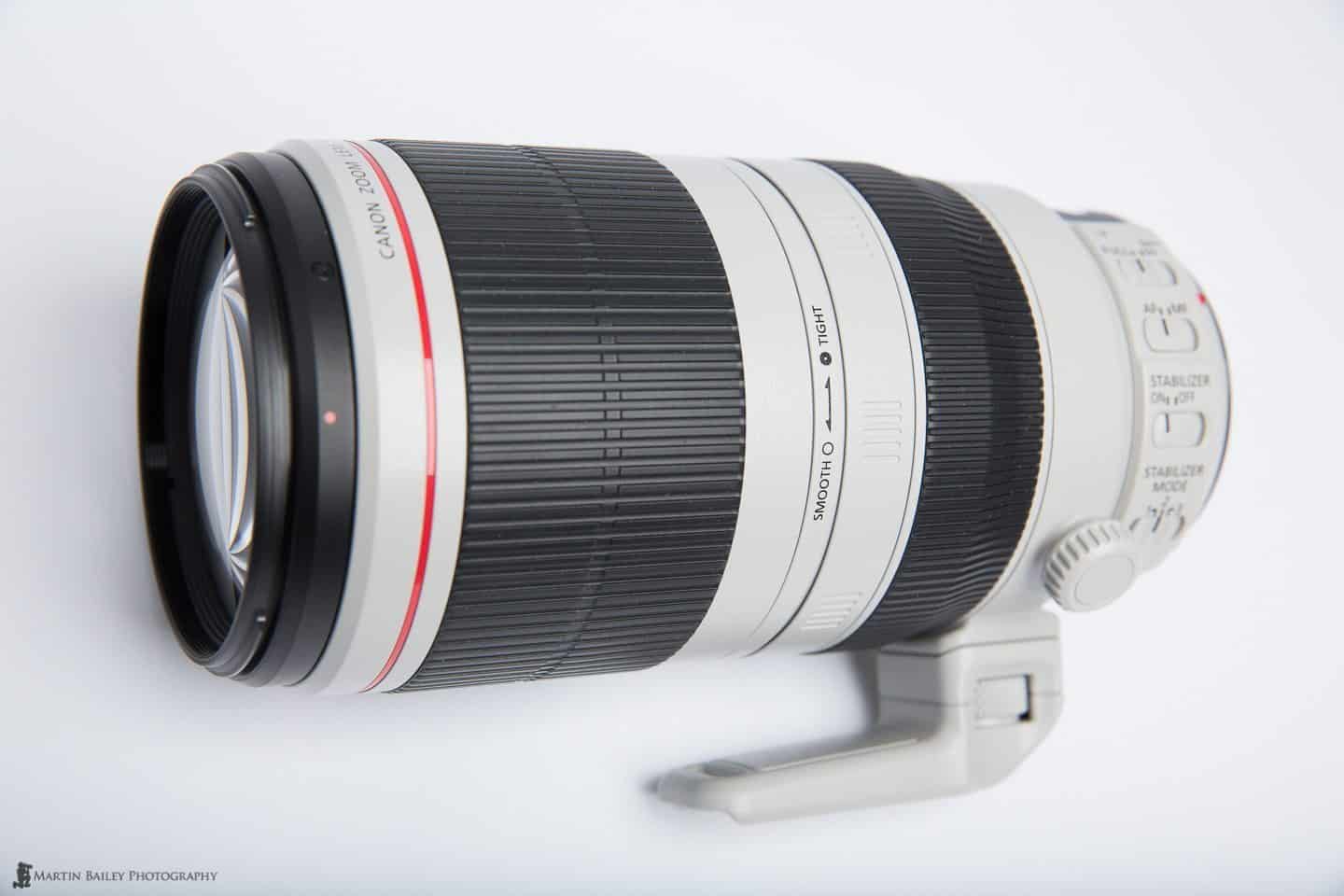

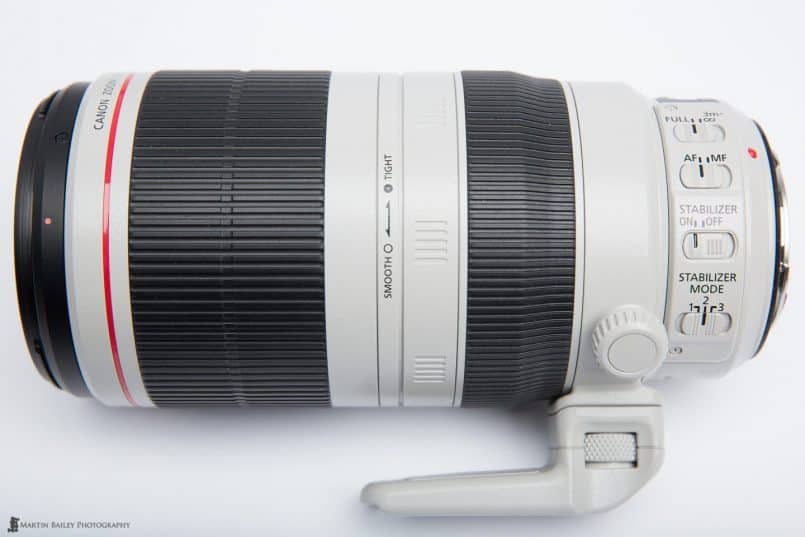

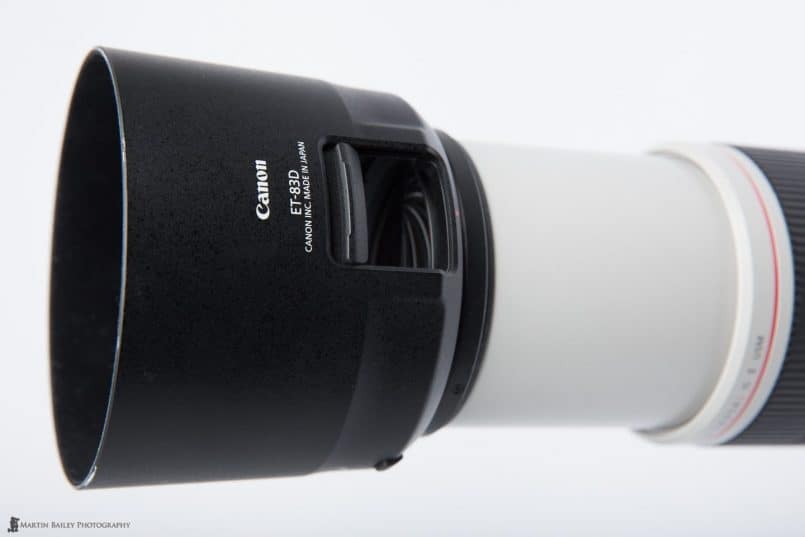
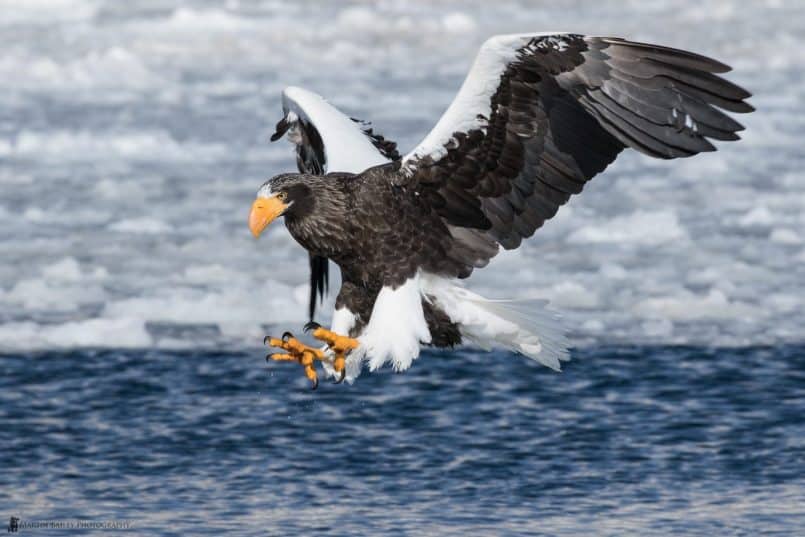
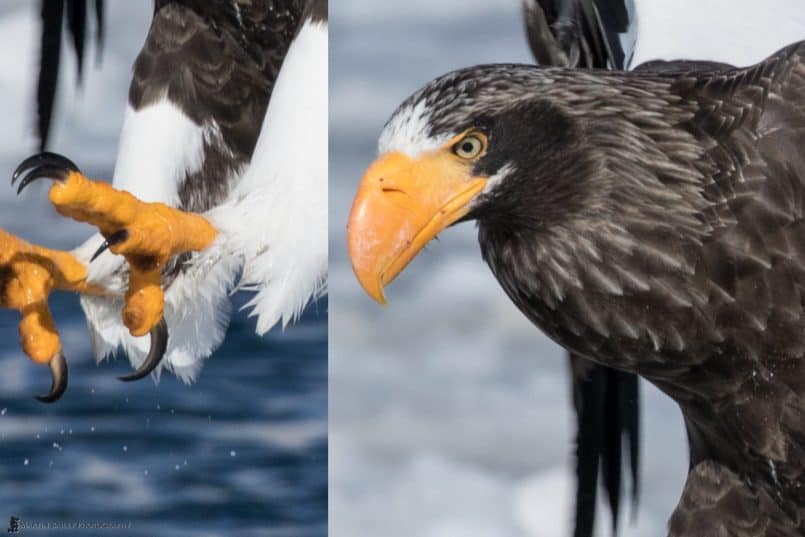
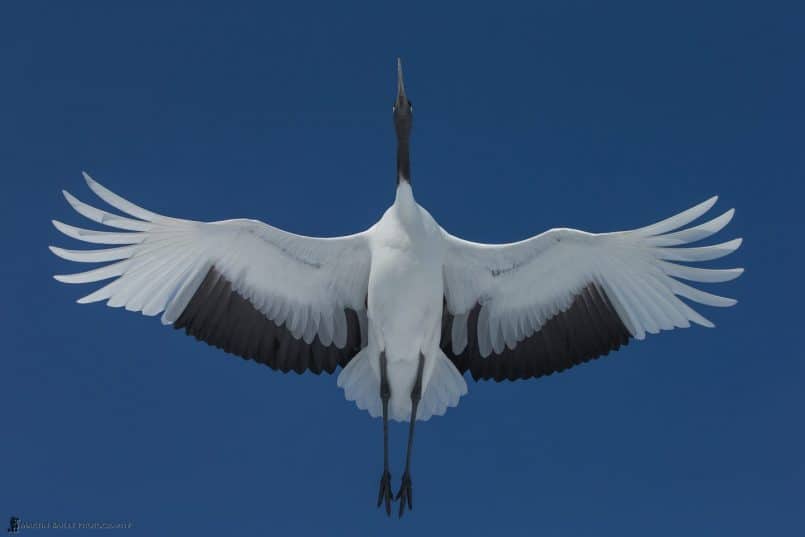
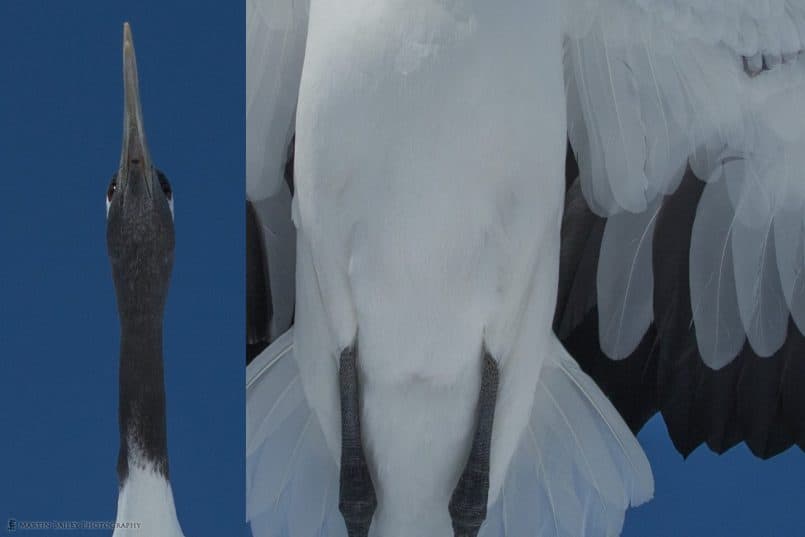
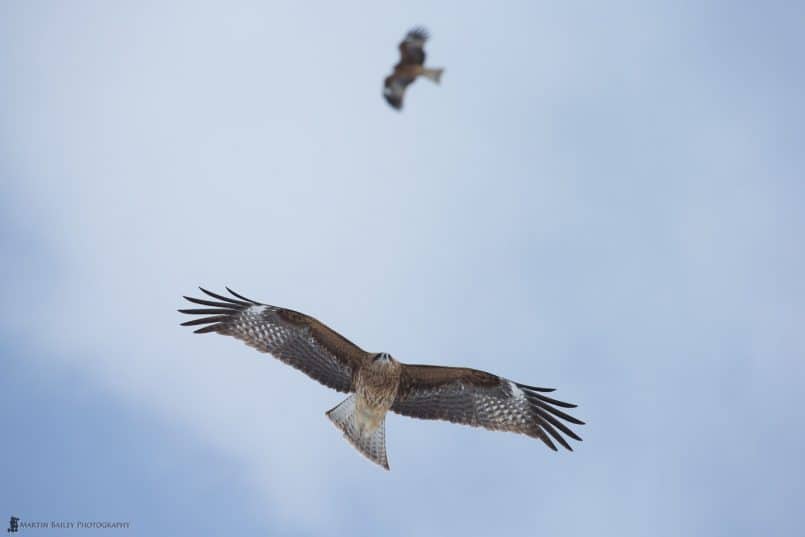
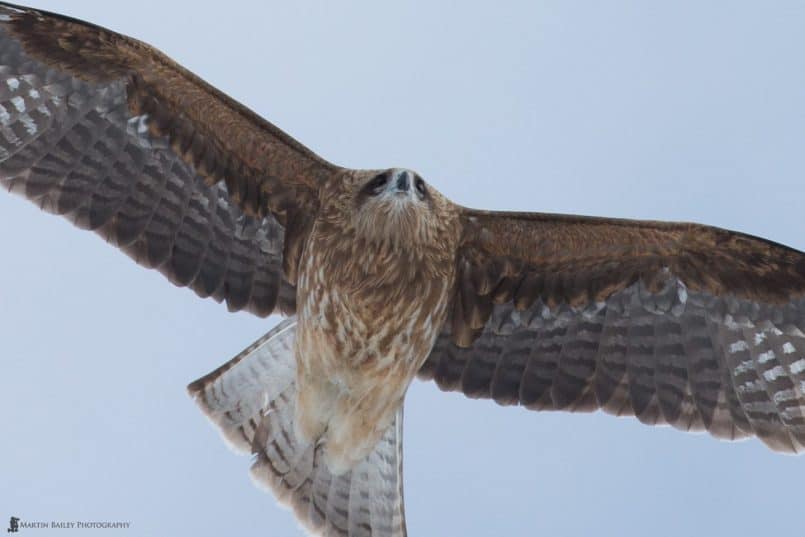
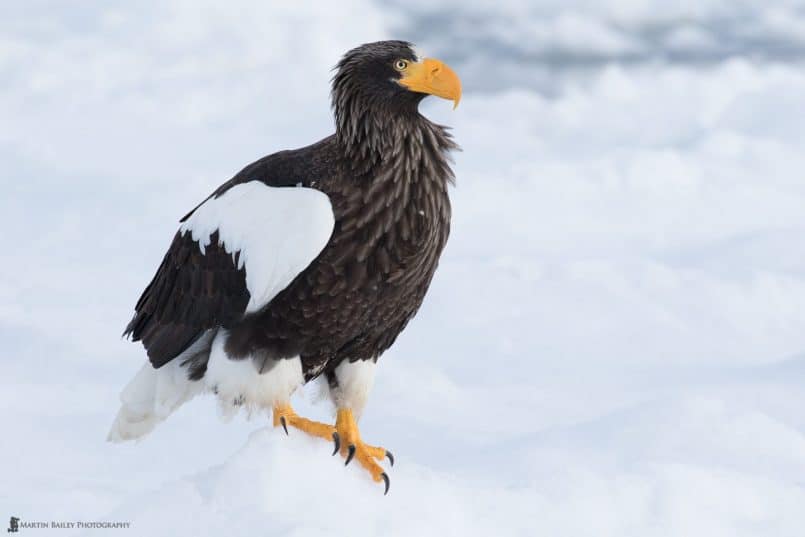
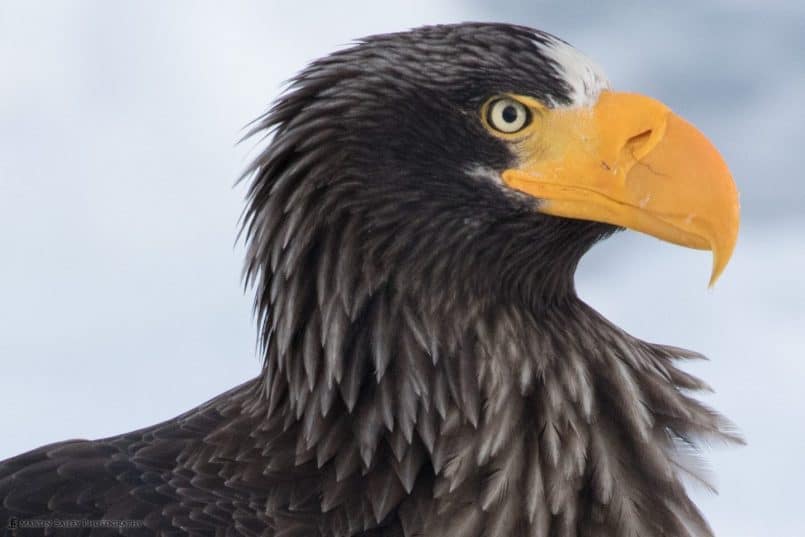
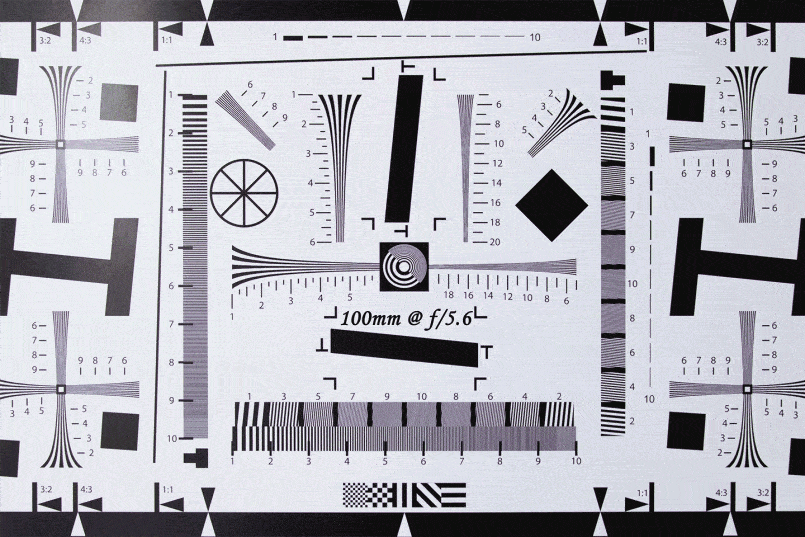
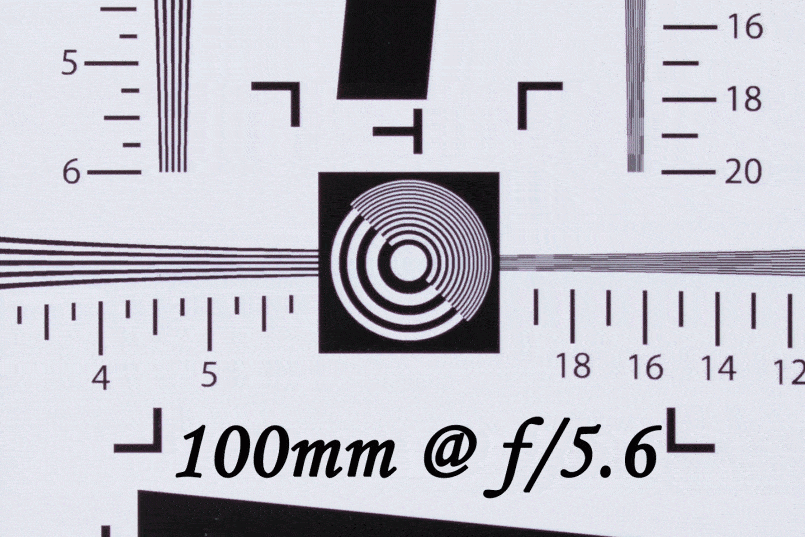
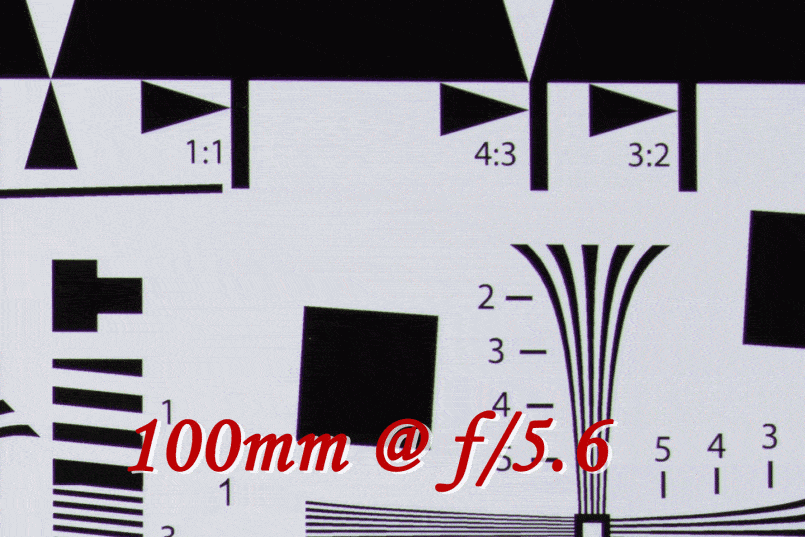
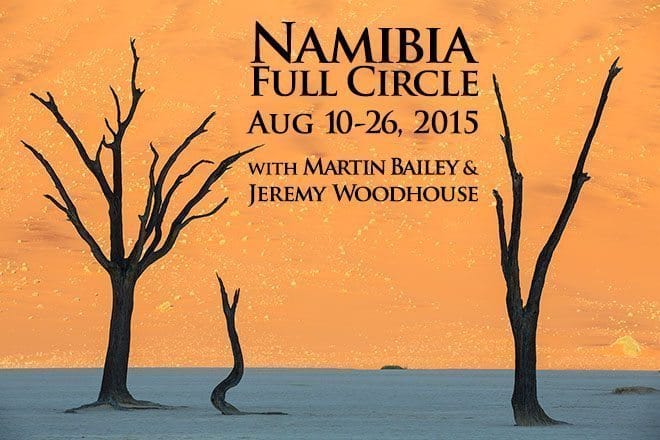

Martin,
Thanks for your comprehensive impressions of this lens. Like you, I had a copy of the older lens and sold it after a year or so because I got fed up with its quirky results. In short, for me it was unreliable.
I bought the new lens as soon as it came out because I wanted the focal length flexibility, particularly for safari use. The only downside I have experienced with it is trying to manual focus it when its fully extended at 400mm. The focusing ring is near to the body so it leaves quite a bit of the lens extended when hand held, which I found made it a bit awkward to support when hand held. I have though adapted the way I hold the lens, supporting the barrel with the palm, fingers pointing forward and using the thumb and fourth finger to move the focusing ring. Its just a question of getting used to it though.
As for sharpness, I fully agree with you. I have just come back from Kenya and on some of the close-ups I shot of a large male lion I was amazed to see every little detail and hair in the RAW file (5DMKIII) – right out of camera the image was tack sharp and the image quality excellent.
Very happy with the new model and cant wait for the summer now to try it with Butterflies and Dragonflies – i would imagine that with an extension tube fitted it will be even more versatile.
David
Thanks for stopping by David! I see what you mean about the manual focus. I support my lenses like that anyway, and so hadn’t really thought about it, but you’re right. Especially if it requires a change to how you hold your lens that might be a bit of a pain initially.
I have been chuckling every time I look at my images though, it’s that sharp. I’m looking forward to Namibia in August too now, as well as a few other trips before that which require hand-held long glass.
Cheers,
Martin.
This was a very helpful review, and a pleasure to listen to and to view.
It makes we wonder whether the 100-400 II would also be a reasonable alternative to the 70-200 II.
Thanks Dan!
I believe it absolutely will be a great alternative to the 70-200 II. I didn’t mention this because I haven’t decided yet, but as time goes by I imagine I will stop taking my 70-200mm f/2.8 out, and end up selling it. Of course, I like the wider aperture, but the 100-400mm is actually sharper, so I’m pretty sure my 70-200mm will start to go unused.
Thank you for this review.
Now, I am confused… Initially, I was not considering this new lense because of the narrow aperture, despite my interest was caught by the relative lightweight…
Here is my problem. I own a 5d3 and a 7d2 bodies. I practice a lot wildlife and nature photography in the French Alps. I also own a 70-200 f2.8 L IS II, a 300 f2.8 L IS II, and both extenders vIII. Certainly a good kit, but quite heavy when hiking for long…
If I buy this new 100-400, i would have a doublon with the 70-200, but I would lack the f2.8 which I like a lot for portraits. In the other hand, I am very reluctant in selling my 300… What I am sure about is I cannot keep 3 lenses like those for an amator practice.
Any advice ? Would I be able to generate with the new 100-400 background blurs of the same quality as what I get from the 70-200 at full aperture for portraits ? Maybe thanks to the short MFD ? Would it be relevant to sell the 70-200, replace it by the new 100-400 for multipurpose (nature in good light, portrait, lanscape), but keep the 300 for nature in low light ?
Hi Stef,
I was using the same kit as you. 70-200mm f/2.8 II and 300mm f/2.8 with Mark III Extenders, but I sold the 300mm f/2.8 when the 200-400mm 1.4X was released. Until recently I have not missed the extra stop of aperture. I took the 100-400mm to shoot some Flowerscape images, and it really didn’t have a wide enough aperture at f/5.6 for the look I was after, but the 200-400mm probably would have at f/4 so I’ll take that next time.
I already sold my 300mm, so I guess that is my answer regarding that. Whether or not to sell the 70-200mm is a more difficult choice.
The 100-400mm is actually sharper than the 70-200mm f/2.8 II so I know that for the majority of my work in this range, I will now reach for the 100-400mm instead. I have considered selling the 70-200mm but I think I’ll wait a few months and see just how much I actually use it from now on. I haven’t used it for four months at this point, since I got the 100-400mm.
Don’t hold on to your current lenses just for use in low light. The cameras you have can go crazy high on the ISO if you expose to the right, so the only consideration really is depth of field. For sure, if you want shallow depth of field for portrait work, you might want to keep the 70-200mm, at least until you’ve seen how well the 100-400mm works for you.
Check your EXIF data if necessary and see how much of your wildlife work you are shooting below f/5.6. If it’s not a lot, or you could stop down and still get the look you want, it may well be worth considering the 100-400mm. Maybe try renting it for a while first? That would help you to see if it makes sense for you.
Sorry I can’t give you a definitive answer, but hopefully this will give you some direction.
Regards,
Martin.
Thank you for your equipment reviews. Always think of you for opinions on new equipment. I purchased the 100-400 and
took it to the beach shooting birds and macros. Did find it does a wonderful job on macros with an extension tube. I like to lay on the beach to get as low as possible when shooting the birds. Evedently to low. By the end of the day my lens would not focus. This was only week 3 with this lens. Sent to Canon and would cost $$$ and it had a lot of sand inside. Their recommendation was to use a rain jacket when around sand or in rain, just a small amount of sand will get in the focusing mechanisms. Expected this to be somewhat more resistant to sand and water. What would, or do you use, to protect this lens?
Ooh, sorry to hear that Dennis!
I don’t use anything to protect this or any of my lenses, but I also know that sand and lenses don’t like each other. This gear is dust and rainproof, but sand is generally a no-no. Also, with sand, a rain cover might not be much use, as it will probably work its way in through the end unless you have it attached very securely.
My advice would be to keep your hand cupped under the lens to keep it out of the sand, or maybe even just lay a piece of cloth or plastic on the sand beneath it, and ensure that you brush off any sand from your hands before touching the lens.
Have you tried this lens with the 5D Mark III and 1.4 extender by any chance? I am thinking of getting the extender. Thanks so much.
I don’t think I have Tim. I did try on the 7D2 just to check that the center focus point worked as expected, but that’s all.
Thank you for a very helpful review. I have the old 100-400mm lens and the old 7D. Would it be worth my while upgrading to the new lens or should I rather consider a camera upgrade.
Thank you
Petrus
Hi Petrus,
I never used the old 7D, so I can’t say for sure, but I’d say if it’s one or the other, the new 100-400mm would give you better quality images. If budget could stretch to bother, they are a great combination together.
Cheers,
Martin.
thank you. I opted for the lens and so far I am very happy with it on my old 7D.
That’s great to hear Petrus. Have fun!
Hello Petrus and Martin, there are two things that I’m confused about, and hoping you can share your feedback
Background: I’ve owned the original 100-400 for almost 8 years now. I shoot full frame. I always shoot handheld. I prefer wildlife and birds in flight.
1.I’ve loved the push pull of the old 100-400 for the convenience of zooming while handheld panning or when a subject comes closer. I have not tried the new 100-400 IS II yet. The concept of twisting to zoom during handheld framing bothers me a lot. I’m especially worried about it causing wobble during hand held shots. What is your experience?
2. If the twist to zoom is indeed problematic, is the sharpness worth the risk of losing shots while fumbling with the zoom ring?
3. is it possible to zoom in/out by simply sliding the palm under the zoom ring, or does one have to grip the zoom ring and turn it?
4. As mentioned here, the sharpness is better than the original 100-400. But would the old 100-400 match up to the new version’s sharpness after some light sharpening?
Thanks so much again!
Hi Simon,
Having used both lenses, I can tell you that they are both very easy to zoom during a pan. I do it all the time with the new lens and have had no issues. Jumping straight from the old to the new model will probably be a bit frustrating at first, but once you are used to it, you will be able to zoom smoothly.
On 2) I really doubt that you’ll lose shots fumbling once you’ve rewired your muscle memory, and personally, I’d rather lose a few shots initially as opposed to sticking with the Mark I lens.
On 3) you can adjust the resistance of the zoom ring with another ring next to it, and if you loosen it right off, Having said that, you will probably never be able to zoom just with your palm under the lens. You need to have at least one finger over the top of the zoom ring to grip it. I generally zoom with my forefinger under the lens and thumb on the top, while supporting the lens with my palm.
On 4) as I no longer own the 100-400mm I can’t really say for sure. It’s your choice as to whether to upgrade of course, but personally, I don’t like to sharpen images any more than the default settings unless I have screwed up on a shot that I can’t shoot again. I prefer my default workflow to produce top-class images without that kind of processing.
I hope that helps!
Regards,
Martin.
Hi Simon
I agree with Martin. It took some time for me to get used to the difference in zoom and yes sliding is so much easier. However I do not think you can beat the sharpness. I have upgraded to the 7D mk11 and the combination rocks.
hi guys.. i am not quiet sure about sand however i wanna share my experience about rain. i just used canon 100-400mm is ii under heavy rain. i was in doubt cause of its front element moving forward and then comes in when de zoom. but i never had a problem of rain so far even with muy basic gear. I used under heavy rain all day yesterday. it was totally wet. however at the end today i checked out there aint any problem at all. It works perfectly well.
That’s good to hear Marasha. Thanks for the update.
I have used my 100-400mm in wet snow now many times too, and it’s been fine. It’s turning out to be an absolutely amazing lens, as I’m sure you’ll agree.
Thanks for your blog about the new Canon 100-400 zoom. I have just upgraded to the Canon EOS 5D Mark III, and was curious about whether that will work with my old 100-400 zoom lens. I wanted to have two backs usable so I don’t have to change lenses all the time. It does sound as it the new Canon EF 100-400mm f/4.5-5.6L IS II USM is a pretty great lens. Should I upgrade to the new lens as well? Thanks for any advice.
Karen
Hi Karen,
Sorry for my delayed reply. I only just saw your question.
I personally found that the old 100-400mm was not performing well once we got past around 10 megapixels, so I would absolutely recommend upgrading to the Mark II version with the resolution of the 5D Mark III. Having said that, you could certainly try it with your old 100-400mm first and check the image quality before making your decision. If you are happy with the images from the old model, you can save some pennies.
Regards,
Martin.
Thanks for the detailed review Martin. Love your podcast and photos. So I feel I can trust a gear review from you.
After a few good years of service and several photos (200k-ish) my 70-200 f2.8 has become too unreliable when focusing and too $$$ to repair. So I’m in the market for a replacement. Obviously my immediate response is to go and buy another 70-200 but I am now thinking this lens could give me better flexibity and in truth most of my photos would have been shoot at 120-200mm (f5.6-f8) so loosing the 70-100mm range will not be a big loss. However I do spend some time shooting indoor track cycling and BMX races at night (under lights) so I did like a wide open 2.8 aperture. However main camera is a 1dx mk I so hey I will just crank the ISO some more with the 100-400. It’s a thought provoking set of options.
Find your comments curious around the IS Mode 3 because I thought it will benefit me and some other reviewers have spoken well of it. Have you changed your thoughts since the original review?
Love your work
Joshua
Hi Joshua,
Sorry for the delayed reply. I’ve been traveling until last night.
You know, Mode 3 IS just doesn’t do it for me. I haven’t really tried again since, but I don’t like it. I wouldn’t let that affect your decision though. If others like it, great! You might, you might not. If you don’t, you’ll still have a great lens that works perfectly in Modes 1 and 2. 🙂
Thanks for the kind words, and for trusting my content.
Cheers,
Martin.
Thanks Martin, great timing as I’d only purchased it a couple of hours before your reply, looking forward to using it in the next couple of days. Like any lens it takes a little time to get the most out of it. Also purchased the new sigma art 12-24 couldn’t push the budget for the canon 11-24 (I’ve borrowed this lens a couple of times and loved it). So far amazed at how straight the sigma is, even compared to the canon. But sigma is a little soft on the edges but hey if people notice that I failed to get the shot.
I have a 5D3 and a 100-400 MK1 and I don’t find it unusable at all. I have shots of house martins landing at 1/8000 sec which are pretty sharp. I also think the 5D3 has a profile for the lens which seems to help it somehow. It does seem to need good light and contrast to focus consistently accurately. But the centre sharpness isn’t bad at all, in my opinion, and certainly doesn’t totally disgrace the 21mp sensor. It does look cleaner on the 5D3 than a crop, but I have some pretty good near-pixel-sharp aircraft in flight shots with a 18mp rebel/600d crop frame. Compared to a non-Canon long lens I had before it, the colour/contrast/light rendition are very pleasing. The other lens was possibly a little sharper but overall I easily prefer the MK1 images. Mine has given some mechanical trouble with the MF ring though, now rectified. I’m sure the new one is better, but the old one isn’t a resolution disaster. I can send some pics in…
Hi Simon,
Certainly not a disaster. I agree. But there are conditions when it will not perform as well as I’d like a lens to perform. For example, you’ll get better image quality at 350mm than at the full extent of 400mm. It also depends on what you do with your images, as in printing really large compared to sharing images on the web, etc. I assure you, the Mark II version of this lens is much better in terms of sharpness and IS performance, but at the end of the day if you are happy with the Mark I, there’s nothing to worry about. I’m not telling you how to feel or what to do, just what’s available and why I made my own decisions.
Also, as good as it was, I’ve now sold the 100-400mm Mark II for the RF 100-500mm which is better again, but that decision was based more on IS performance and the extra reach, as well as it being a native RF lens for my mirrorless Canon cameras now. Our motives and decisions will be different, so please don’t think I’m having a dig at your lens.
All the best for 2021.
Regards,
Martin.